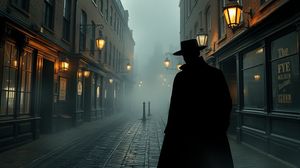
Old Spitalfields Market, situated in the vibrant neighborhood of Spitalfields, is one of London's oldest marketplaces, with roots tracing back to the 17th century. The market was established in 1638 when Charles I granted a license for flesh, fowl, and roots to be sold on Spital Square, and has grown over the centuries into a bustling hub of trade and leisure.
The market is housed under a Victorian canopy, originally designed by the architect George Shadbolt in 1887. This architectural jewel gives visitors a sense of stepping back in time, with its iron and glass façade that provides a charming blend of the historic and the contemporary.
Visitors will find a diverse range of goods at Spitalfields Market, from independent designer offerings to vintage finds. The market is particularly renowned for its crafts and unique artisanal products, making it a great place to discover one-of-a-kind treasures.
Interestingly, Spitalfields was once famous for the silk produced by the Huguenot refugees during the 17th and 18th centuries. This period of history is still honored within the local community, adding a rich cultural tapestry to the market's legacy.
The market's unique character has made it a frequent choice for film and television shoots, adding to its quirky allure. It has featured in productions such as "Lock, Stock and Two Smoking Barrels” which highlights its cinematic charm.
Old Spitalfields Market is not just about shopping; it also hosts a range of food vendors and pop-up restaurants, offering a global gastronomic experience right in the heart of London. From street food fare to gourmet dining, the market caters to a variety of tastes and preferences.
The market is a vibrant community space that regularly hosts events, from art markets to themed shopping evenings, making it a constantly evolving destination filled with unexpected delights and creative surprises.
Adjacent to the historical area of Brick Lane, the market reflects its multicultural surroundings and is a testament to the diverse cultural influences that continue to shape London today. This melting pot atmosphere gives the market an exciting and dynamic vibe.

Making the Most of Your Visit:
Get there early: To experience Spitalfields Market at its best, try to visit early in the day, especially on weekends. This is when you can catch the market at a more relaxed pace, and vendors are often more willing to chat and share the stories behind their unique products.
Explore the hidden gems: Don't just stick to the main thoroughfare of the market. Venture into the smaller nooks and crannies, where you might stumble upon lesser-known stalls offering unusual and distinctive pieces that aren't available elsewhere.
Indulge in culinary delights: Make sure to come with an appetite as the market is a haven for foodies. Sample a variety of street food options and don't miss the chance to try some of the pop-up restaurants. Many locals swear by the market's vibrant blend of international cuisines.
Check out the art and events: Spitalfields Market frequently hosts art installations and themed events. Keep an eye out for these as they offer an ever-changing experience and a chance to see local creativity in action.
Appreciate the history: Take a moment to appreciate the rich historical backdrop of the market. The Victorian architecture and the market's historic role in the silk trade add layers of depth to your visit, making it a place where history and modernity intertwine seamlessly.

Visiting Times & Costs:
Old Spitalfields Market is open to the public seven days a week. Its regular trading hours are:
- Monday to Friday: 10:00 AM to 8:00 PM
- Saturday: 10:00 AM to 6:00 PM
- Sunday: 10:00 AM to 5:00 PM
There is no entrance fee to visit Spitalfields Market, making it accessible for everyone to explore the numerous stalls, shops, and food vendors.
In terms of accessibility, the market is largely accessible for wheelchair users. The area has generally flat ground and is spacious enough to accommodate those using mobility aids. However, some individual stalls or tightly packed areas might present challenges, so it's good to plan accordingly.

Address & Map:

Nearby:























